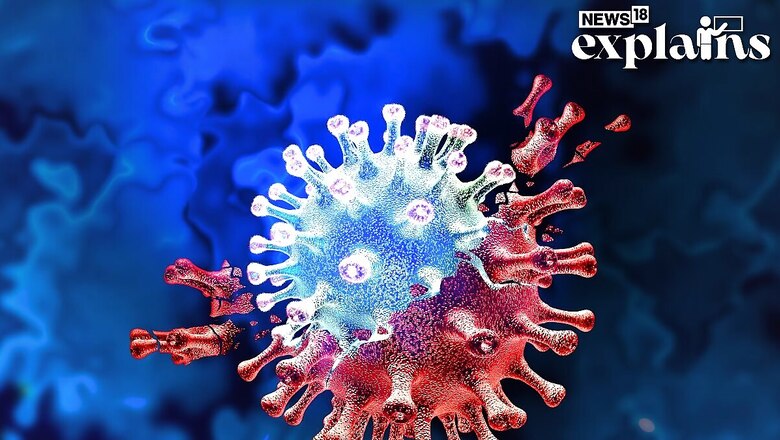
views
A new variant of Covid-19 has caused concern across the world as scientists have warned that the variant could be more infectious and evade vaccine immunity.
The JN.1 strain of Coronavirus, first detected in September, has now been found in the United States and 11 other countries, the Centres for Disease Control and Prevention (CDC) said in a statement.
The new JN.1 variant is a descendant of the BA.2.86 variant or ‘Pirola’, which is a highly mutated variant of the Omicron strain of the coronavirus, which emerged in 2021 and was on rise in the US, UK, China and parts of Europe.
Is JN.1 Similar to BA.2.86 Pirola Variant?
Though BA.2.86 and JN.1 sound very different because of their names, there is only a single change between the two variants in the spike protein, according to CDC.
The spike protein, which looks like tiny spikes on the virus’ surface, plays a crucial role in helping the virus infect people. Due to this reason, the spike protein is also the part of a virus that vaccines target, meaning that the same vaccines should work against JN.1 and BA.2.86 similarly.
Therefore, the scientists are hopeful that the updated 2023-2024 Covid-19 vaccines working against BA.2.86 will also work against the new variant.
What We Know About the Variant So Far
- Neither JN.1 nor BA.2.86 is common in the US right now. In fact, JN.1 has been detected so rarely that it makes up fewer than 0.1 percent of SARS-CoV-2 viruses.
- However, the variant has shown a very fast growth rate in other parts of the world since it was first identified in Luxembourg at the end of August. It was also detected in England, Iceland, France and the US.
- JN.1 contains 41 additional unique mutations compared to XBB.1.5, which is the target of the latest vaccine boosters in the US and most emerging variants are descendants of this virus.
- According to Eric Topol, the founder of the Scripps Research Translational Institute, JN.1 is “separating from the pack” with possible enhanced contagiousness. He also said that it won’t be known for a few weeks whether JN.1 will be linked with a significant rise in cases or how much immune protection prior infection.
- Scientists have said that as long as we have Covid-19, there will be new variants. JN.1 and every other new variant that comes in future will represent relatively small changes compared with previous variants.
- It is already known fact that BA.2.86 variant was more transmissible than previous variants, so there has been concerns that JN.1, a derivative of BA.2.86, may be more transmissible, according to Thomas Russo, chief of infectious diseases at the University at Buffalo in New York.
- Most of the changes in JN.1 are found in the spike protein, which suggests increase in infectivity and immune evasion.
Symptoms
The symptoms of the JN.1 are similarly to previous variants like BA.2.86 variant. According to the CDC, these include:
– Fever or chills
– Cough
– Shortness of breath
– Fatigue
– Muscle or body aches
– Headache
– Loss of taste or smell
– Sore throat
– Congestion or runny nose
– Nausea or vomiting
– Diarrhoea


















Comments
0 comment